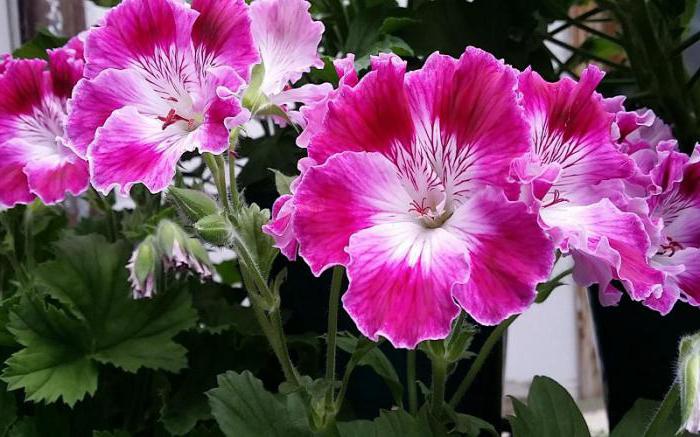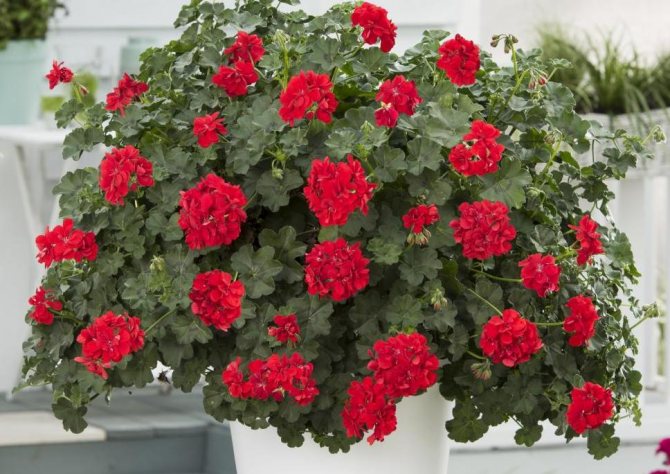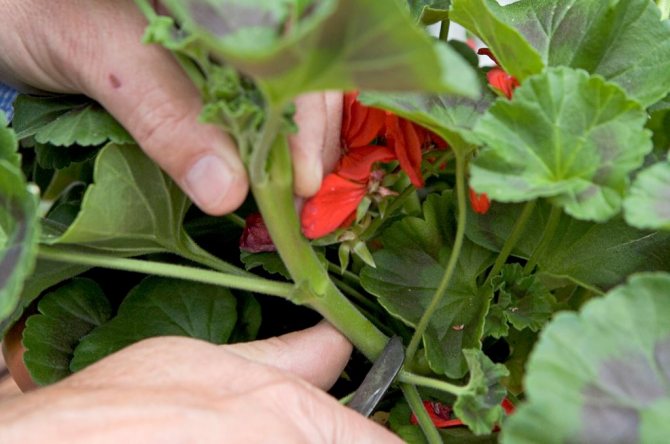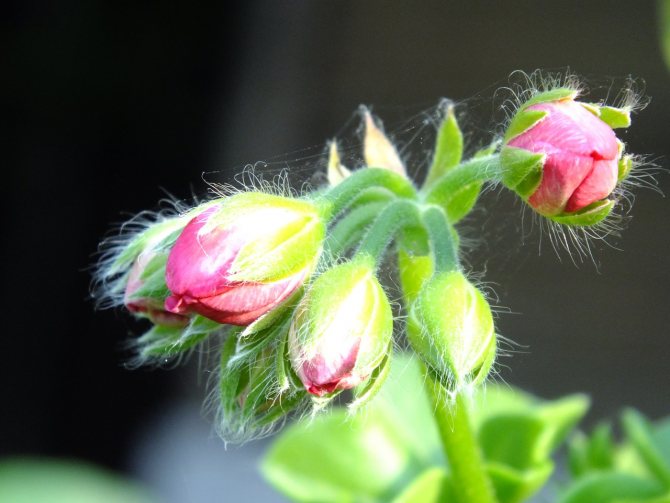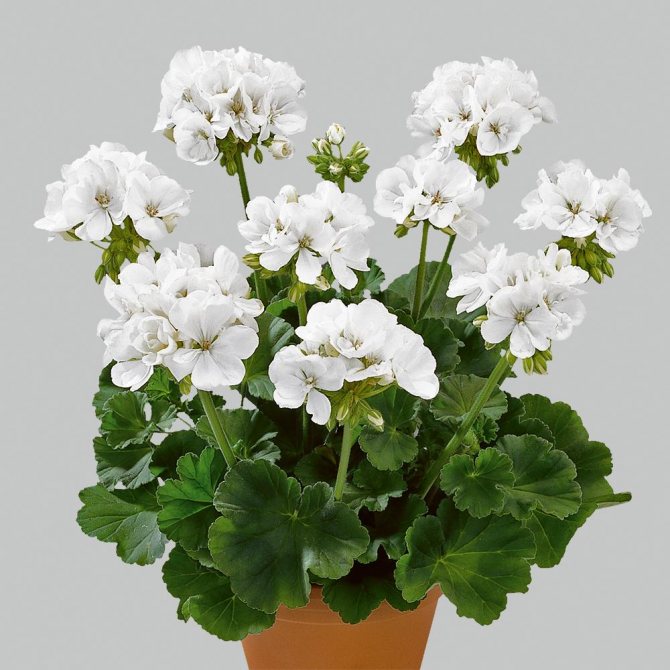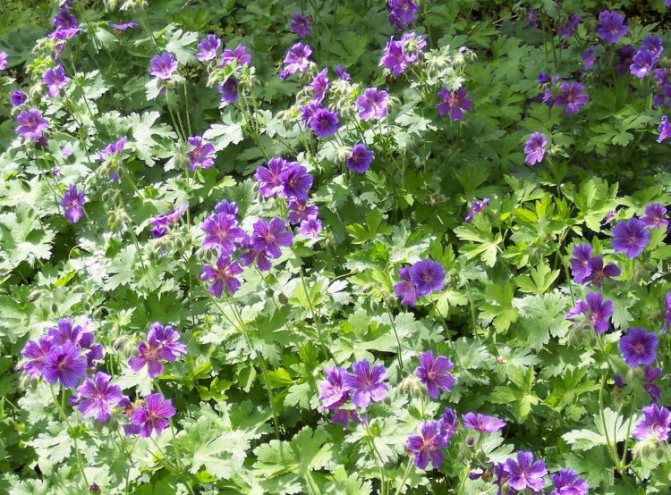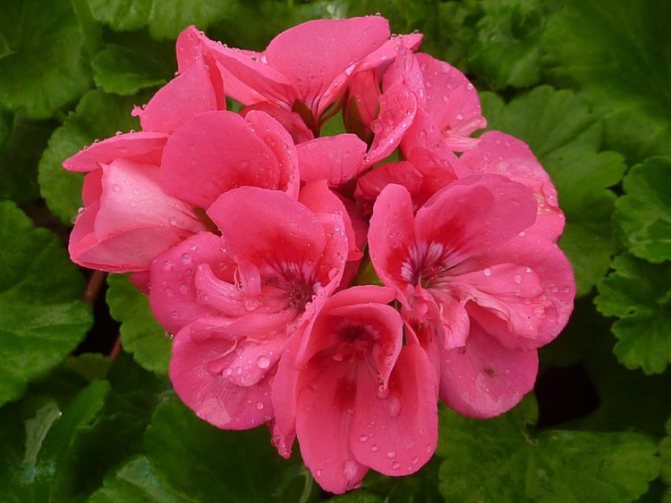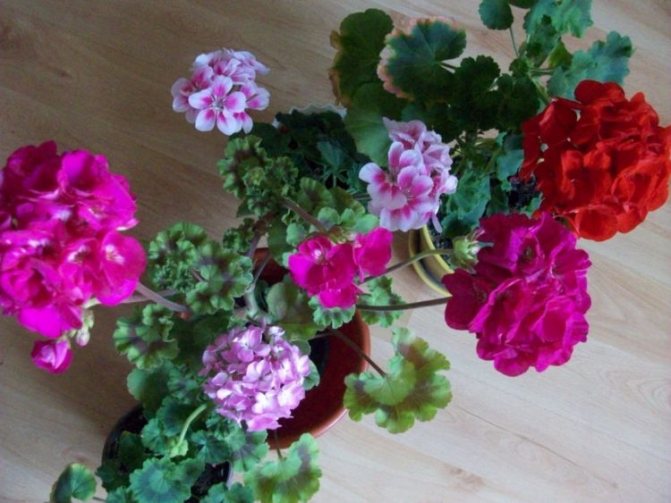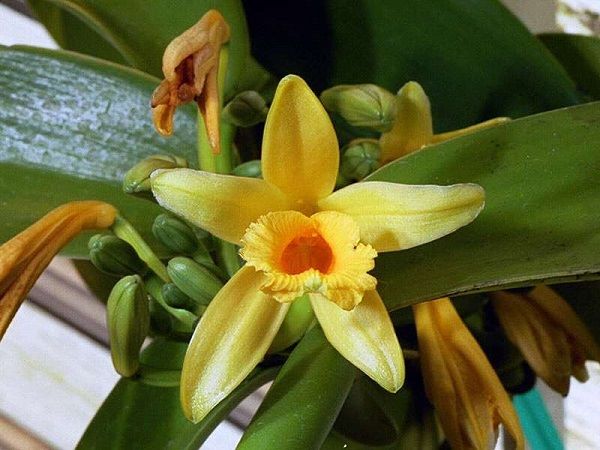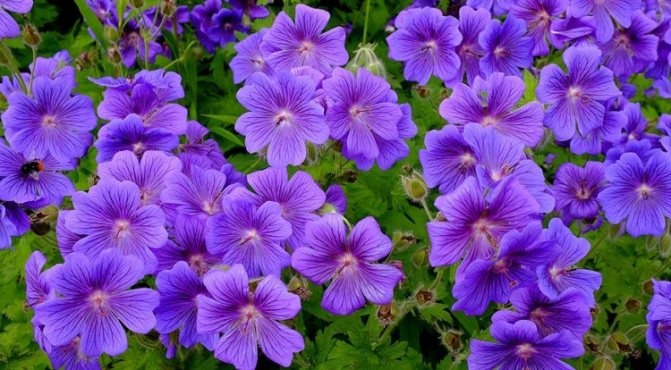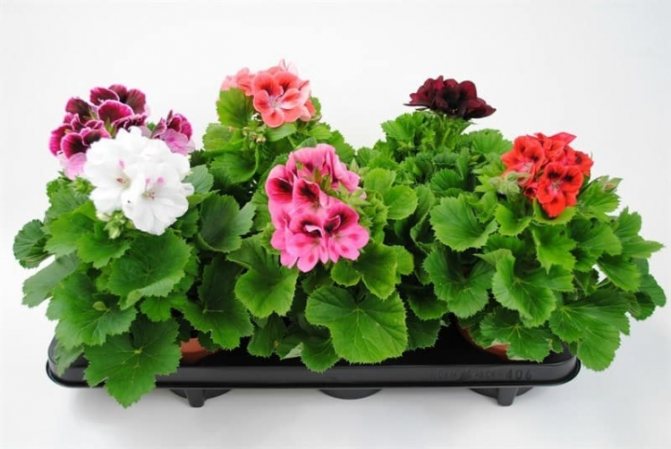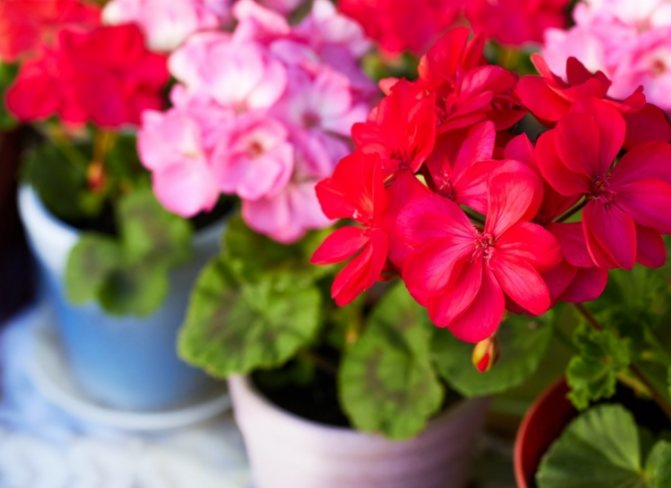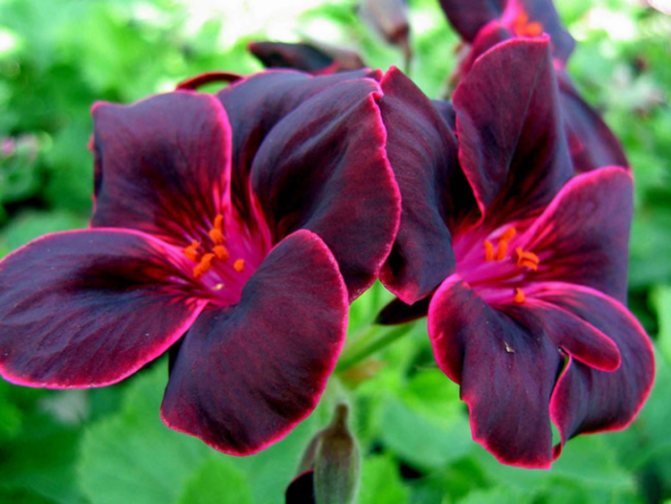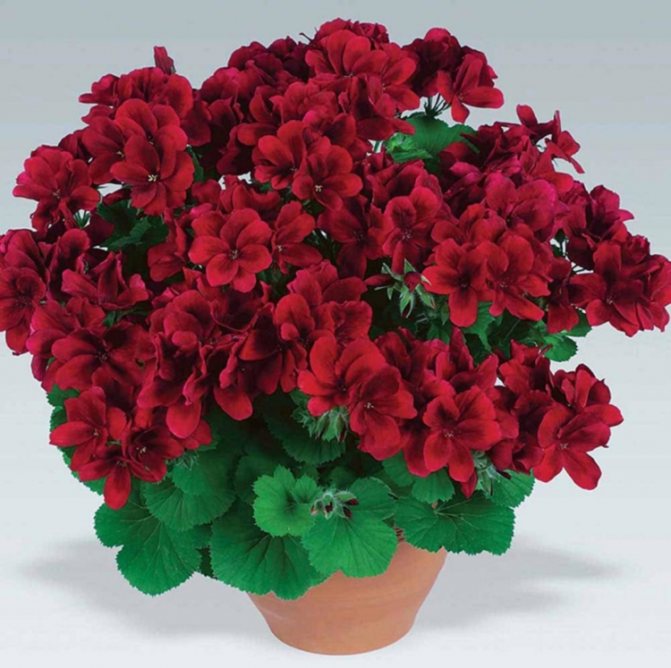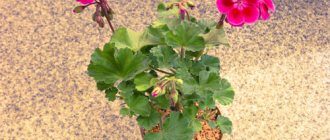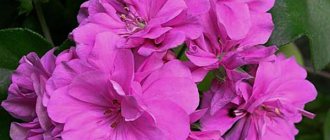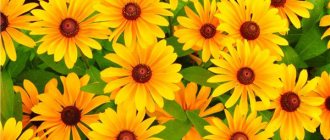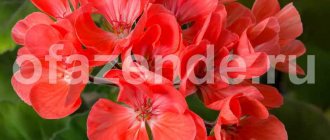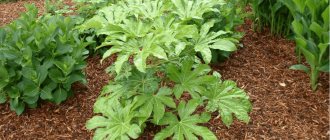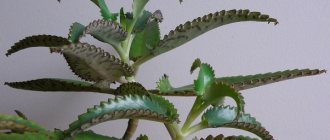Homeland of the geraniums
The geranium family is divided into two genera of plants - actually geranium (lat.Geranium), which is called Zhuravelnik due to the fact that its seeds are similar to the beak of a crane and pelargonium (lat.Pelargonium) is the flower that we used to call geranium, or just Kalachik. Why such a confusion came out is unknown. The plant was brought from Great Britain in the 17th century and it may seem that this is the birthplace of an amazing flower, but this is not so.
Geraniums are southern plants; they were brought to Europe by British colonizers from South Africa and India. But it is Great Britain that is rightfully considered the birthplace of most of the breeding varieties that today decorate our apartments and garden plots.

Home geranium
Landing
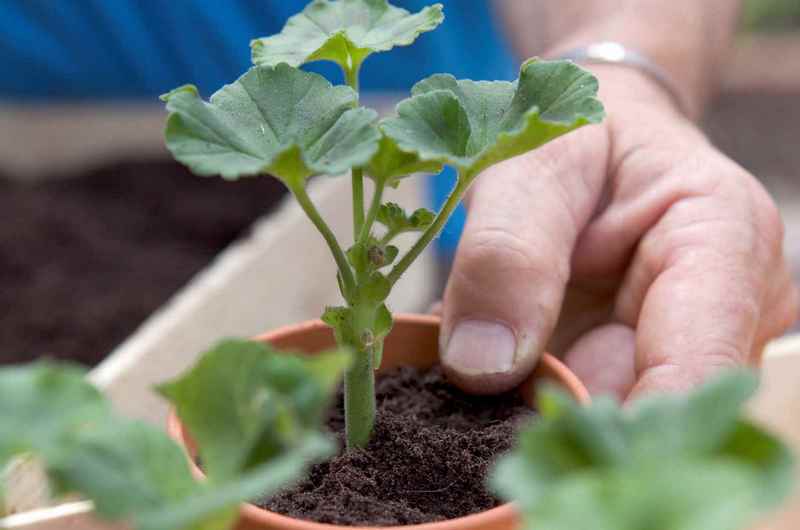

Immediately before planting, the cut of the cutting is dipped in a root growth stimulator (Kornevin, Athlete, Bona Forte, Kristallin, Energen and others). Deepening in the ground must be done with your hands or with a pencil, so as not to damage the layer of healed tissue near the cutting.
The point of growth of the leaves should be approximately 1 to 2 cm above ground level. The soil around the cutting must be crushed. The rooting time can range from 10 days to several months. It depends on the condition of the mother plant, the conditions of maintenance and the time of year.
Geranium and Pelargonium
The difference between geranium and pelargonium is not only in the form of plants, their flowers and leaves, but in the fact that pelargonium is a thermophilic flower, and geranium is frost-resistant and grows in natural conditions. In order to distinguish these plants, you need to carefully consider the flowers - in Pelargonium, two-sided zygomorphic (paired) flowers are collected in lush inflorescences. The caps of the inflorescences can be of different shapes and colors, the leaves are pentagonal, serrated or similar to a horseshoe, the shoots hang down or branch, and over time they can become stiff.
In true geraniums, the flowers are radially symmetrical and collected in small semi-umbrellas, almost always of the correct shape. It is a herbaceous perennial with a highly branched stem, leaves are five- or seminadrezny, flowers are located on long pedicels, most often they are five-petal, but varieties with double multi-petal flowers are found. Their color can be very different, there is only orange and yellow.
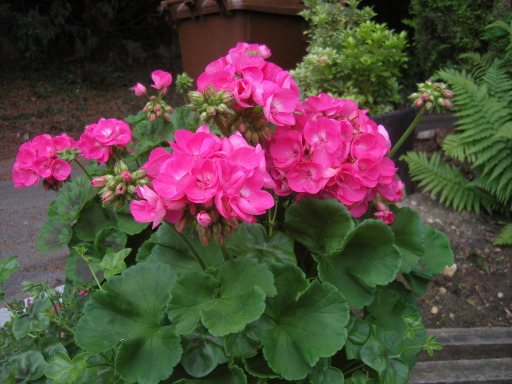

Pelargonium flower
Geraniums exude a peculiar, unique aroma, many varieties of the plant are healing. Why do flower growers love these plants so much? Their distinctive feature is unpretentiousness, increased resistance to diseases. Geranium blooms beautifully and for a long time, it is very easy to "revive" and give a neat look.
Community of green men
Pelargonium Pelargonium, home geranium. Evergreen shrub with woody stems, jagged leaves and flowers on the edge, collected in large inflorescences - umbrellas of white, pink, red, lilac color, as well as with spots or stripes.
Etymology of the name
The name of the genus comes from the Greek word pelagros - "stork": by the similarity of the fruit to the beak of a stork.
Pelargonium is a universal flower. It can be used as a houseplant, when landscaping flower beds, balconies, terraces, etc. These flowers are unusually effective in hanging baskets. Thick foliage hides the container from the eyes, bright inflorescences create a color spot that rivets the viewer's attention. These baskets will give a unique look to your balcony, porch or terrace.It is quite simple to make it, it requires simple care, and long-term flowering will provide decorativeness for a long time.
Types and varieties of pelargonium
The genus unites about 280 species of annual and perennial herbaceous plants, shrubs, semi-shrubs, distributed mainly in South Africa.
Domestic pelargonium (Pelargonium x domesticum)
A cultivated species resulting from the crossing of several species. Evergreen shrub 45 cm high. Stems are lignified, hairy. Leaves are alternate, petiolate, dentate along the edge. Flowers usually appear in spring or early summer. Large inflorescences - umbrellas of white, pink, red, lilac color, as well as with spots or stripes - completely hide the foliage.
Pelargonium crispum ‘Variegatum’
It is valued for the decorativeness of fragrant, yellow-spotted leaves with scalloped or curly edges.
Pelargonium garden or zonal pelargonium (Pelargonium x hortorum)
A cultivated species obtained as a result of a series of crosses.
The most common type in indoor floriculture. The name of the species is associated with the brownish horseshoe-shaped pattern on the leaves, which is more pronounced in plants growing in well-lit areas. This species is perhaps one of the most popular, since the plants grow well both in indoor culture and in the open air (specimens from the garden, transplanted into containers in autumn, can bloom almost all year round). Not only compact and medium-sized varieties are popular, but also vigorous cultivars. Individual flowers in umbellate inflorescences are simple, semi-double and double.
Of particular interest are varieties with star-shaped flowers. Their inflorescences seem to be collected from bird feathers - very light and delicate. A separate direction in the selection of zonal pelargoniums is the breeding of varieties with very colorful foliage. Leaf plates, on which, in addition to the characteristic horseshoe-shaped pattern, a white border appears, or a yellow color becomes the basis, various options for two- and three-color combinations, "take away" decorative functions from less bright inflorescences.
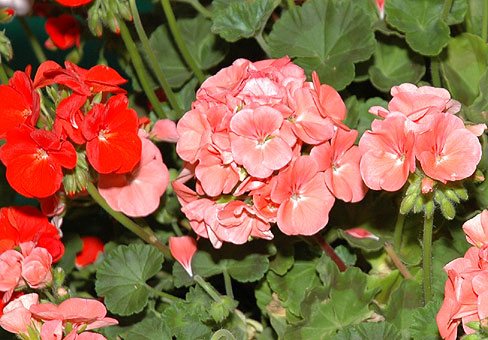

Pelargonium garden, variety mixture Delta is a new hybrid of Pelargonium that blooms 2 weeks earlier than others. Variety with a compact bush with abundant flowering. The height of the bush is 25-30 cm.
Popular varieties and variety series of zonal pelargonium:
As an example, the following varieties of zonal pelargonium can be cited:
Pelargonium zonal Algela Woodberry - large double bright red flowers;
Pelargonium zonal Apple blossom
- flowers are collected in white double roses with a pink border and a greenish center, type Rosebud Zonal pelargoniums. The variety is tall, it needs shaping;
Pelargonium zonal F1 Blank
- compact bush up to 35 cm high with white flowers. The leaves are green with a characteristic dark pattern;
Pelargonium zonal Carmel - standard non-double pelargonium,
flowers are white with a thin pink edging;
Pelargonium zonal Cecile monroe
- pink (salmon) double flowers look like roses;
Pelargonium zonal Dolce vita
- salmon flowers with a light edge, large and double;
Pelargonium zonal PAC Salmon Komtess
- variety with double flowers of salmon color;
Pelargonium zonal PAC Salmon Princess is a compact variety with large double flowers, pinkish flowers, darker in the center;
Pelargonium zonal Scarlet Rambler -
compact bush with double-colored double flowers (red with one and light with the other), type Rosebud Zonal pelargoniums .;
Pelargonium zonal Elite Series (Elite) (F1 hybrids) - varieties of this series are distinguished by large long-lasting inflorescences of the correct spherical shape and compact size of the bush;
Pelargonium zonal Series PAC Fireworks - the series unites varieties with stellar-shaped flowers (Stellar), with serrated pointed petals, inflorescences located on very high peduncles, color - from solid white, pink, red, salmon, to two-color with a wide variety of combinations of the given shades;
Pelargonium zoned Tango series - a series of varieties with very dark foliage and early flowering, a wide range of colors (bright red, pink, lavender, salmon, pale pink and white).
Fragrant pelargoniums have the smell of rose, lemon, mint. Their leaves can be used as the leaves of other fragrant herbs, filling them with gift baskets, "scented" pillows, bags that are put in linen, etc.
Fragrant Pelargonium (Pelargonium graveolens)
Semi-shrub up to 1 m high, with densely branching, pubescent shoots. Leaves 5–7-lobed, pubescent, with a strong aroma. The flowers are medium-sized, pink, collected in umbellate inflorescences. Blooms in summer.
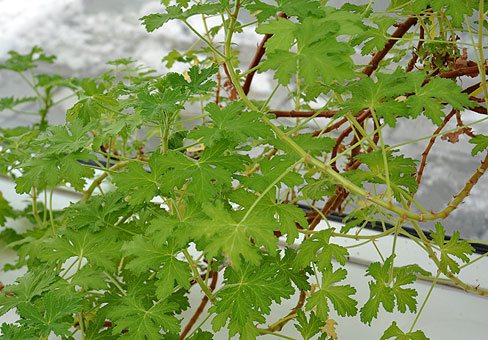

Pelargonium fragrant
Pelargonium grandiflorum
A semi-shrub or shrub with woody stems below. The leaves are large, rounded, finely toothed, folded, without a border. The color of the leaves is from light to dark green. The flowers are large, up to 5-6 cm in diameter, simple or double, collected in inflorescences. Coloring - from white to dark red and purple, various shades. Pelargonium large-flowered is sometimes also called English. However, the origin of this name is not entirely clear, because in England it is known as a royal or exhibition, and in the USA - as "Lady Washington".


Popular varieties of large-flowered pelargonium:
For almost two centuries, varieties of the ‘Angel’ group have been popular, obtained by crossing curly Pelargonium (Pelargonium crispum) with the smell of lemon and Royal Pelargonium (Pelargonium grandiflorum). The light lemon aroma was preserved in the hybrids.
Pelargonium grandiflorum Tip top duet
- 30-40 cm high, the upper petals of the flowers are dark crimson with burgundy veins, the lower ones are pale lilac;
Pelargonium grandiflorum Wayward Angel
- flowers are light lilac with crimson spots on the upper petals;
Pelargonium grandiflorum Fairy
Queen
- The flowers are large, wavy, the upper petals are dark purple with a white border, the lower ones are white with purple droplets and veins.
Pelargonium thyroid (Pelargonium peltatum)
Herbaceous plant with long (up to 80 cm) creeping shoots. Leaves 5–8 cm in diameter, thick, smooth, glossy, green, sometimes reddish along the edge. Flowers on short peduncles, simple or double, white, pink, red, lilac. Blooms in summer.
Bright colors of flowers, luscious greenery, delicate aroma and long-term abundant flowering have won the Pelargonium truly nationwide love.
Pelargonium classification
Division of pelargonium according to the Hazel Kay system from the English nursery Fibrex:
Zonal pelargoniums:
Single Zonal pelargoniums - non-double zonal pelargoniums;
Double Zonal pelargoniums - terry zonal pelargoniums ("double");
Rosebud Zonal pelargoniums - rosaceous zonal pelargoniums ("rosebuds");
Miniature Zonal pelargoniums - miniature zonal pelargoniums ("miniatures", "minks");
Dwarf Zonal pelargoniums - dwarf zonal pelargoniums ("dwarfs");
Variegated, Colored, Fancy-leaved pelargoniums - variegated zonal pelargoniums (variegated, variegated);
Stellar Zonal pelargoniums - stellar zonal pelargoniums ("stellar", "stellars");
Cactus-flowered Zonal pelargoniums - cactus-like zonal pelargoniums ("cactus");
Other pelargoniums:
Regal pelargoniums - royal pelargoniums ("queens", "royal");
Ivy-leaved pelargoniums - ivy-leaved pelargoniums ("ivy leaves", "buns");
Hybrid-Ivy-leaved pelargoniums - "Ivy" -hybrids ("Ivy-leaved") pelargoniums;
Scented-leaved pelargoniums - fragrant pelargoniums ("fragrant");
Angel pelargoniums - Pelargonium Angels ("Angels");
Unique pelargoniums - Pelargoniums Unicums ("Unicums");
Species pelargoniums - specific pelargoniums;
Species Hybrids pelargoniums - species hybrids ("species hybrids").
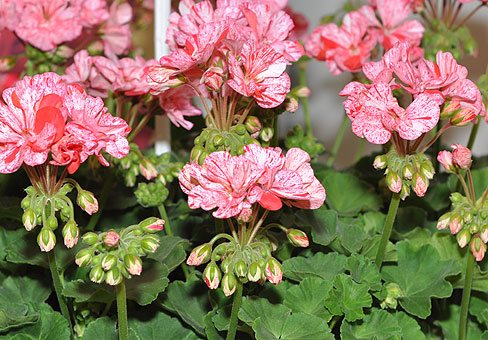

Pelargonium PAC Peppermint Twist is a variety with a lush inflorescence of semi-double, pink with red strokes and speck of flowers.The leaves are green with a brown center.
Popular varieties of pelargonium
Pelargonium care
Pelargoniums are extremely unpretentious plants. Excessive care even harms them: on fertile soil and in large pots, the bushes actively grow, but they bloom poorly, and excessive watering is simply destructive (the genes of African ancestors are affecting!). The best soil for them will be one that consists of equal parts of sod (or compost) soil, humus, peat and sand. However, they can be content with almost any "garden-garden-meadow" soil, if it is not too dense and not too rich in organic matter.
Zonal, ivy and fragrant pelargoniums are planted in flower beds for the summer, but for this they are gradually accustomed to the open sun. Flowering will be richer and foliage brighter if they are periodically fed with fertilizers, in which the nitrogen content is less than phosphorus and potassium. To get more lush bushes, the plants need to be pinched, that is, the apical bud or the very tip of the shoot must be removed.
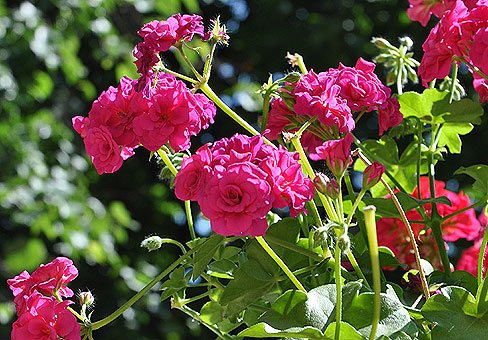

Possible problems when growing pelargonium:
— no flowers on room pelargonium - if the plant looks healthy, then the likely cause is too warm air in winter;
— watery soft pads on pelargonium leaves - edema is a non-contagious disease associated with waterlogging of the soil. Reduce watering;
— yellowing lower leaves at pelargonium - indicates a lack or excess of moisture. If the leaves remain elastic or only the edges dry out, there is a lack of moisture. If the leaves are lethargic or rotting, it is a matter of excess moisture;
— bare stems, shedding of the lower leaves of pelargonium - lack of light - pelargoniums are photophilous;
— darkening of the stem base in pelargonium - black leg disease. Such a plant is destroyed. In the future, use sterilized soil and avoid waterlogging;
— gray mold on pelargonium leaves - gray rot caused by the fungus Botrytis occurs when the soil is waterlogged. It is a contagious disease. Remove the affected leaves, treat with a systemic fungicide, reduce watering and better ventilate the room;
— Pelargonium pests - can be affected by whiteflies, aphids and weevils.
Reproduction of pelargonium
Most often, pelargonium is grown from stem cuttings. They are cut in spring or summer from semi-lignified shoots; for the same purpose, the tops of the shoots are also used when pruning adult plants. Each cutting should have 4–5 leaves, with one or two of the lower leaves removed. After cutting, the cuttings are dried in the air for one to two hours. They can be rooted in a mixture of peat and sand or just in water. At a temperature of + 18 ... + 20 ° C, pelargonium will give roots and will be ready for planting in a pot in 2-3 weeks. Pots for young plants are small, 7-9 cm in diameter. If the container is large, the plant will bloom much later.
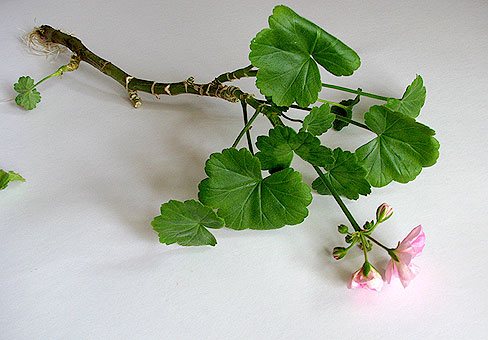

Pelargonium stalk with roots, ready to plant
Ecology of dwellings with pelargonium
Many varieties have phytoncidal properties, so they can be very useful in homes with children. Recently, it has become popular in the West to keep several pots of geraniums with different flavors as "kitchen" plants. The volatile substances they emit are not only pleasant, but also useful: the air is cleared of microbes and harmful impurities. Pelargonium has one peculiarity - it “sucks in” dampness and waste, purifies and refreshes the air of the premises, and also absorbs stagnant air. A number of pelargonium species are used as an insecticidal plant. With one or two pelargonium in the room, there is a significant reduction in the number of mosquitoes, flies, etc.
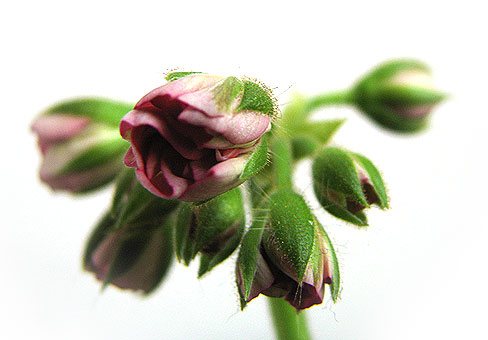

The healing properties of pelargonium
The aroma of pelargonium relieves spastic pains, nervous excitement, fatigue, restores disturbed blood circulation. Helps with functional diseases of the central nervous system, balances the processes of excitation and inhibition, helps to normalize sleep. Possesses bactericidal properties.In oriental medicine, Pelargonium essential oils are applied locally to cervical cancers. Geranium oil is a strong antiseptic. It helps with diseases of the upper respiratory tract, inflammation of the middle ear, mucous membranes of the throat and sinuses, heals wounds and ulcers; perfect for disinfecting indoor air, especially during influenza epidemics.
Pelargonium energy
Pelargonium serves as a kind of "fire extinguisher" for negative energies, aggressive attacks, anger and hatred. Its energy is characterized by upward spiral vibrations. Energy flows from the roots of the plant into the stem, around it in a spiral to the tips of leaves and flowers, covering the flowers in wide diverging circles.
Floral Cooking with Pelargonium
Fragrant pelargoniums have the smell of rose, lemon, mint. Their leaves are used in cooking as an additive to many dishes. Before using for food, make sure that the plants have not been treated with pesticides and wash the leaves.
Interesting facts about pelargonium
From the leaves of pelargonium, an essential oil is obtained, which is called geranium. At all times, rose-scented geranium oil has been highly regarded as a substitute for the extremely expensive rose oil. The best essential oil is obtained from plantations in the south of France and Spain. In France, in the vicinity of the city of Grasse, it was isolated from the leaves of "geranium" already in the 18th century, and today this country is the world leader in the production of a valuable aromatic substance. Pelargonium plantations are spread over an area of about 3000 hectares and give annually 120 thousand tons of fresh leaves. After distillation, they get from 100 to 150 tons of oil.
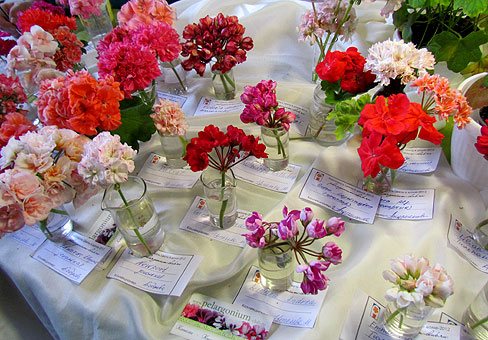

Pages of history with pelargonium or home geranium
The first pelargonium came to Europe presumably at the end of the 16th century. Naturalists decided that this is one of the new types of geraniums, but real geraniums grow in our forests, in clearings and meadows and belong to a completely different genus, although they belong to the same family.
How to care for geraniums
Geranium (pelargonium) blooms on the windowsill and outdoors in summer. The most optimal is room temperature, but in the winter season, you should give the plant some rest time and try to lower the temperature to 150. To do this, you can take it out to a cool place or put it on a cold windowsill, where the temperature is below room temperature.
The intensity of watering the plant depends on the season. Geranium loves abundant and constant watering, but does not tolerate stagnant water, from this the roots of the flower will begin to rot and collapse. It is not recommended to spray the plant, when spraying other flowers, you need to make sure that drops of water do not fall on the leaves of geranium (pelargonium). In the most ordinary breeding conditions, its shoots do not dry for a long time and delight with their beautiful flowers.
Since geranium is a southern plant, it loves maximum lighting and is not afraid of open sunlight. Well lit, it will delight you with lush growth, bright green large leaves and lush blooms. With a lack of light, the leaves become small and pale, and the flowering is poor. Therefore, if geranium does not bloom, then try changing the conditions of its keeping.
Geranium is planted in garden soil or a universal earth mixture. The plant feels especially comfortable in the soil composition:
- Sod land - eight parts
- Fine sand, calcined in the oven - one part
- Humus (3 years old) - two parts.
Before planting, it is necessary to arrange good drainage of the soil.
It is necessary to feed the plant during the period of flowering and growth - it is quite enough to introduce universal fertilizer 1-2 times a month. You can buy a special complex fertilizer for geraniums at a flower shop.
In summer, when the plant blooms, it requires constant watering and fertilization. In winter, for "rest", geraniums need to be transferred to a cool place and watering should be somewhat reduced so that it does not grow and the stems do not stretch out.For the winter, the tops of the plant are cut to a height of no more than 25-30 cm.
The composition of the soil for geraniums at home, features of the choice of the size of the pot
Planting geraniums is carried out in a moderately nutritious soil, neutral or slightly sour. Highly fertilized soil in a homemade pelargonium pot will result in the leaves growing abundantly without flowering. Planting pelargonium in a light gardening soil with river sand and peat is an ideal option for a potted plant at home. The same soil mixture is suitable for sowing, and it is better to plant cuttings in a mixture of peat and sand (preferably spilled with a weak solution of potassium permanganate) or perlite.
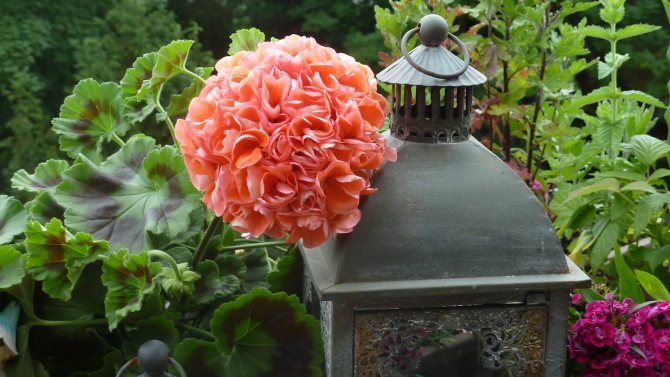

Drainage, for example, pebbles, must necessarily fall on the bottom of the pot. This prevents stagnant water and root rot. The size of the pot is selected according to the volume of the root system. The larger the capacity for the plant, the more powerfully the bush grows, as a result it will bloom less. In a small pot, pelargonium can bloom for a long time and perfectly. Several rooted cuttings can be planted in a large container. A plant transplant is needed at the moment when the roots absorb the entire volume provided.
You can grow pelargonium at home in plastic or clay pots. The second option is preferable, since in synthetic containers you will have to water it very carefully and often loosen it. In them, the soil dries slowly, they do not allow water and air to pass through. Every year you need to replace the top layer of soil in pots with a new one, and in the second year it is better to transplant homemade pelargonium.
How to transplant and propagate a plant
If the plant does not bloom for a long time, the roots have grown too much, the shoots are stiff, the leaves dry or the roots begin to rot, then a transplant is required. This flower does not like spacious pots, so you can plant it in the same flower pot, after cleaning it.
Geraniums can be propagated from seeds and are sown in January. The soil is pretreated with boiling water, after cooling, seeds are planted in moist soil. The container is covered with a film, as soon as the seedlings appear, they are periodically ventilated. Shoots dive after germination of the 4th leaf.
Geraniums propagate easily by cuttings, even an accidentally broken branch or leaf with a cuttings root perfectly in fertile moist soil. The stalk must be taken from the top of the plant with 4 leaves; for germination, it can be simply put in water. It is recommended to cut the cuttings in early fall or mid-spring.
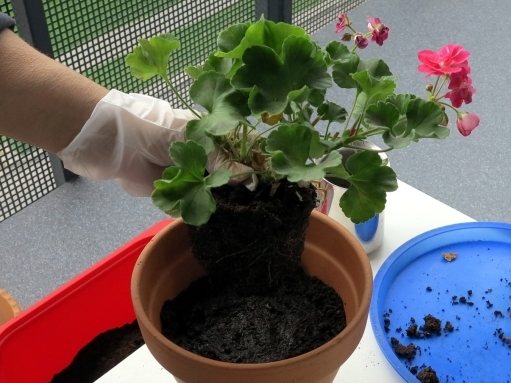

Geranium transplant
Geraniums need to be rejuvenated once every two years. This is done by dividing the bush in the spring. For abundant flowering, the tops of the plant must be pinched, and the yellowed leaves must be immediately removed by hand. Indoor geraniums can be planted in an open flower garden in the summer - it will bloom strongly and decorate your garden.
Reproduction
Expert opinion
Vasily Dmitrievich
A local amateur gardener as well as an article editor site.
Pelargonium propagates in three ways: by cuttings, dividing the bush, and using seeds.
Cuttings


The best time for grafting is late winter and early spring, or the second half of summer.
To do this, cut a 5-7 cm stalk, on which 2-3 leaves remain, wither a little and plant in a soil mixture.
Watering is carried out infrequently in the edge of the pot, while not covering it with anything.
After a month, it takes root, and it can be placed in water, and when the roots grow, in the ground.
Seeds
Planting seeds for germination is carried out from January to March
... To do this, spread out on damp ground, they are slightly covered with soil mixture, and on top with a film or glass, after which a constant temperature is maintained from 20 to 24 ° C, and the soil is moistened from time to time.
2 weeks after emergence, produce pick
seedlings by placing them at a lower temperature and giving them good lighting. After another 2 months, they are transplanted to a permanent place.
Propagation by cuttings is easier to produce, but plants grown from seeds are distinguished by more abundant flowering.
An excerpt characterizing Geranium
From the end of 1811, intensified armament and concentration of the forces of Western Europe began, and in 1812 these forces - millions of people (including those who transported and fed the army) moved from West to East, to the borders of Russia, to which in the same way since 1811 the year the forces of Russia were pulled together. On June 12, the forces of Western Europe crossed the borders of Russia, and a war began, that is, an event that was contrary to human reason and all human nature took place. Millions of people committed, against each other, such a countless number of atrocities, deceptions, treason, theft, forgery and the issuance of false banknotes, robberies, arson and murders, which for centuries will not be collected by the chronicle of all the courts of the world and for which, during this period of time, people those who committed them did not look at them as crimes. What caused this extraordinary event? What were the reasons for it? Historians say with naive confidence that the reasons for this event were the offense inflicted on the Duke of Oldenburg, non-compliance with the continental system, Napoleon's lust for power, Alexander's firmness, diplomatic mistakes, etc. try and write a more searching piece of paper or write to Napoleon to Alexander: Monsieur mon frere, je consens a rendre le duche au duc d'Oldenbourg, [My dear brother, I agree to return the duchy to the Duke of Oldenburg.] - and there would be no war. It is clear that this was how the business seemed to contemporaries. It is clear that it seemed to Napoleon that the cause of the war was the intrigues of England (as he said it on the island of St. Helena); it is clear that it seemed to the members of the English House that the cause of the war was Napoleon's lust for power; that it seemed to the Prince of Oldenburg that the cause of the war was the violence committed against him; that the merchants thought that the cause of the war was the continental system that ravaged Europe, that the old soldiers and generals thought that the main reason was the need to use them in business; the legitimists of that time that it was necessary to restore les bons principes [good principles], and the diplomats of that time that everything happened because the alliance of Russia with Austria in 1809 was not skillfully hidden from Napoleon and that the memorandum was awkwardly written for No. 178. It is clear that these and still countless, infinite number of reasons, the number of which depends on the countless differences of points of view, seemed to contemporaries; but for us - descendants, contemplating in all its scope the enormity of the event that took place and delving into its simple and terrible meaning, these reasons seem insufficient. It is incomprehensible to us that millions of Christians killed and tortured each other, because Napoleon was power-hungry, Alexander is firm, the policy of England is cunning and the Duke of Oldenburg is offended. It is impossible to understand what connection these circumstances have with the very fact of murder and violence; why, due to the fact that the duke was offended, thousands of people from the other end of Europe killed and ruined the people of the Smolensk and Moscow provinces and were killed by them. For us, the descendants, - not historians, not carried away by the process of research and therefore with an undisguised common sense contemplating the event, its causes are presented in innumerable numbers. The more we delve into the search for reasons, the more they open to us, and every single reason taken or a whole series of reasons seems to us equally fair in themselves, and equally false in their insignificance in comparison with the enormity of the event, and equally false in their invalidity ( without the participation of all other coinciding reasons) to produce the event that has occurred. The same reason as Napoleon's refusal to withdraw his troops across the Vistula and to give back the Duchy of Oldenburg, seems to us the desire or unwillingness of the first French corporal to enter the secondary service: for if he did not want to go into service and would not want another, the third , and the thousandth corporal and soldiers, so fewer people would have been in Napoleon's army, and there could not have been a war. If Napoleon had not been offended by the demand to retreat beyond the Vistula and had not ordered the troops to advance, there would have been no war; but if all the sergeants did not want to enter secondary service, there could be no war either.Also, there could be no war, if there were no intrigues of England, and there would be no Prince of Oldenburg and a feeling of insult in Alexander, and there would be no autocratic power in Russia, and there would be no French revolution and the ensuing dictatorship and empire, and all that that produced the French Revolution, and so on. Without one of these reasons, nothing could have happened. Therefore, all these reasons - billions of reasons - coincided in order to produce what was. And, therefore, nothing was the exclusive cause of the event, and the event had to happen only because it had to happen. Millions of people had to, renouncing their human feelings and their reason, go to the East from the West and kill their own kind, just like a few centuries ago crowds of people went from the East to the West, killing their own kind. The actions of Napoleon and Alexander, on whose words depended, it seemed, whether the event would happen or not, were just as little arbitrary as the actions of every soldier who went on a campaign by lot or by recruitment. It could not be otherwise, because in order for the will of Napoleon and Alexander (those people on whom the event seemed to depend) to be fulfilled, the coincidence of countless circumstances was necessary, without one of which the event could not have happened. It was necessary that millions of people, in whose hands there was real power, the soldiers who fired, carried provisions and guns, it was necessary that they agree to fulfill this will of isolated and weak people and be led to this by countless complex, varied reasons. Fatalism in history is inevitable for explaining unreasonable phenomena (that is, those whose rationality we do not understand). The more we try to reasonably explain these phenomena in history, the more unreasonable and incomprehensible they become for us. Each person lives for himself, uses freedom to achieve his personal goals and feels with his whole being that he can now do or not do this kind of action; but as soon as he does it, this action, performed at a certain moment in time, becomes irreversible and becomes the property of history, in which it has not a free, but a predetermined meaning. There are two sides of life in every person: personal life, which is the freer, the more abstract its interests, and spontaneous, swarm life, where a person inevitably fulfills the laws prescribed to him. A person consciously lives for himself, but serves as an unconscious instrument for achieving historical, universal human goals. A perfect deed is irreversible, and its action, coinciding in time with millions of actions of other people, acquires historical significance. The higher a person stands on the social ladder, the more people he is associated with, the more power he has over other people, the more obvious the predetermination and inevitability of his every action. "The heart of the tsarevo is in the hand of God." The king is a slave to history. History, that is, the unconscious, common, swarming life of mankind, uses every minute of the life of the kings for itself as an instrument for its own purposes.
Rooting leaves
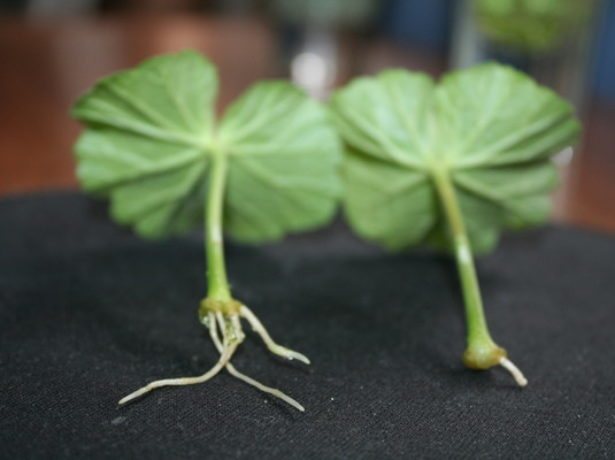

There is another vegetative way how geraniums reproduce: under favorable conditions, not only cuttings, but also leaves can germinate. They are broken off from a branch together with a lignified "heel", from which the roots will appear. They grow longer than with cuttings, and the percentage of rooted plants is very small - about 20-30%. Therefore, this method is ineffective and rarely used.
The soil for propagation by leaves is used the same as for propagation by cuttings. Water very sparingly. The planting material is pre-dried. Many of the leaves give roots and 3-4 leaves, and then die. This method can only be considered as a "last chance" if there is no way to propagate the plant using cuttings.
Planting in disposable cups
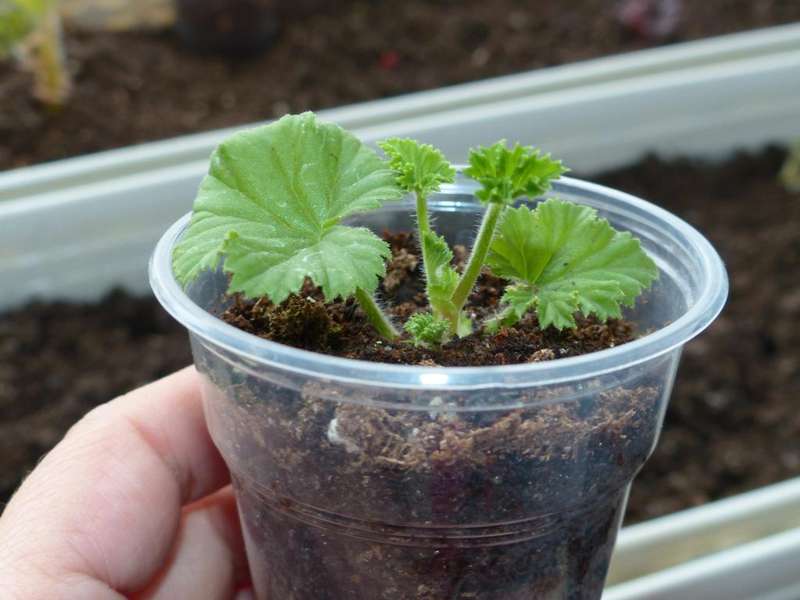

There are several ways geraniums multiply: in plastic bottles, pots, peat tablets. Planting in transparent disposable cups is simple, economical and allows you to monitor the development of the root system. Pre-prepare the soil and cuttings as described above. Then proceed as follows:
- in 100-gram plastic cups, cut off the transition from the walls to the bottom in 2-3 places with scissors;
- expanded clay or other drainage (fine gravel, crushed stone) is poured to the bottom;
- place the prepared soil in a glass, spray it from a spray bottle;
- a recess is made in the center with a wooden stick;
- plant cuttings and slightly compact the earth around them, set the glass on a pallet.
If the ground has become waterlogged, then 3-4 layers of paper napkins or towels are placed under the drainage holes, which absorb excess water.
Geranium in painting
- Rubens Peale with a Geranium.jpg
Painting by the artist Rembrandt Peale, Rubens Peale with a Geranium, 1801
- Le Géranium rouge.jpg
Painting by artist Léon Gard, "Géranium rouge dans une coupe de cristal". Paris, 1971
- Estudio de la flor del geranio Josep Mirabent Gatell.JPG
Painting by artist Josep Mirabent Gatell "Estudio de la flor del geranio de pensamiento"
Preparing the soil
At this stage, no special preparatory work is required, since it was already said earlier that geranium is not capricious. However, like any other plant, this flower will grow much better in fertile and nutritious soil.
The only thing that must be sure to provide geraniums is good drainage. Thanks to this, it will be possible to get very lush flowers.
Before planting a plant, it is necessary to dig up the area reserved for geraniums. Experienced gardeners also add some peat and compost to the soil.
Watering and lighting
When propagating pelargonium by cuttings, the following conditions must also be observed:
- seedlings are placed in a well-lit place (but not in the open sun);
- optimal ambient temperature - +23 ° С;
- moistening the earth is done when it dries up a third of the pot from above;
- for faster growth of the cuttings, the leaves can be sprayed with solutions of growth stimulants ("Zircon", "Epin" and others).
The shank is not recommended to be placed near heating devices and in drafts. If the leaves begin to dry out, then you can build a greenhouse for the plant from the cut off top of a plastic bottle. To harden the cutting and air it, the lid is periodically opened. In other cases, greenhouses for geranium seedlings are usually not used.
Diseases and pests
Geranium rarely suffers from ailments. However, if not properly cared for, it can develop bacterial rot. In this case, unpleasant dark spots appear on the leaves and stems of the plant. To cure geraniums, you need to get rid of diseased plants and treat the remaining flowers with specialized products that can be purchased at any gardening store.
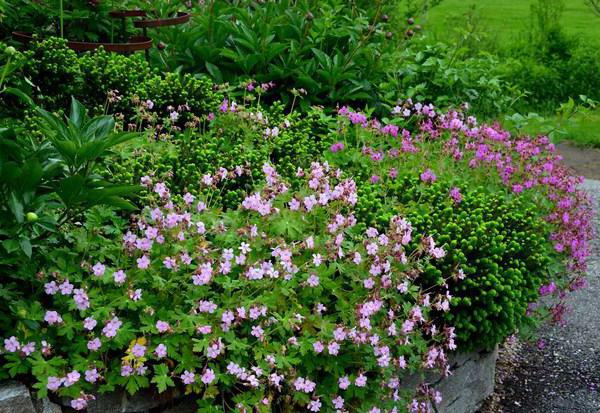

Of the pests, the plant attacks aphids. In order to get rid of it, it is enough to use an insecticide. Also geraniums sometimes begin to devour whiteflies. A specialized tool "Iskra" will help scare off gluttonous pests.
If caterpillars begin to devour the plant, then the easiest way is to collect them by hand and destroy.
Popular talks
Text of the article: The July beetle is from the Khrushchey subfamily, the Lamellar beetle family. Large insect, up to four centimeters in length. Convex shape, elongated-oval.
Every person wants to have a real friend who would be there not only in moments of joy, but also help in difficult times. And also could always give good advice and support. An example of true friendship is the attitude
The steppe eagle, is one of the largest species of birds of prey, this bird species belongs to the hawk family, and the Orlov genus.


Photo
Below you can see a photo of room geranium flowers, including undersized, blue and medicinal.
The most beautiful species and varieties of geraniums are described in articles on our website. We will introduce you to the following varieties: Royal, Garden (street), Rosebud, Black Velvet, Max Fry, Roseanne, Zonal, Tulip, Peony, Angel.
Choosing planting material
If we talk about reproduction, large-rhizome geranium is spread by seeds or by dividing the rhizome. Also, you can not suffer and just buy ready-made seedlings in any specialized store or agricultural company engaged in flower cultivation.
Experienced gardeners prefer to buy a rhizome, which has a large number of adventitious roots and a renewal bud. However, in this case, you need to be well versed in colors. It is worth paying attention to the fact that the roots are firm enough, and there is no damage to them.
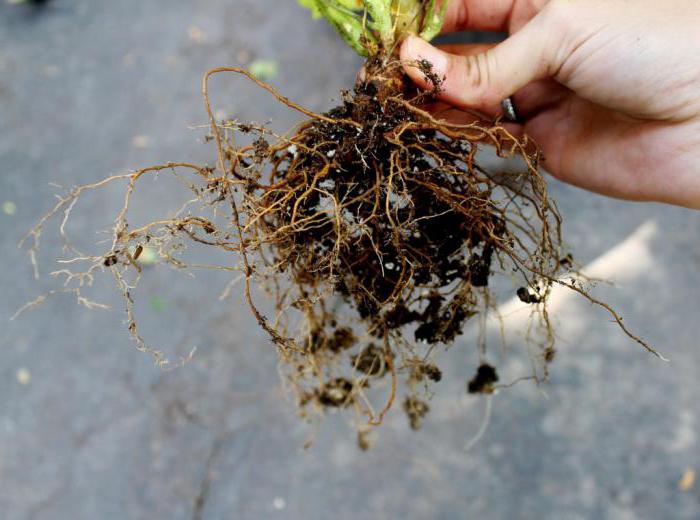

It is recommended to purchase such large-rhizome geranium material in February. You need to store the harvesting of roots in the refrigerator, dropping them into peat. So they will remain until the moment of disembarkation.
Brief characteristics of the plant
Pelargonium, better known as geranium, is a perennial plant in the geranium family. In the wild, pelargonium is found in South Africa. Several types of this plant are very popular with florists:
- homemade pelargonium, large-flowered is the starting material for the breeding of many species of this plant. The leaves are rounded, with jagged edges. Flowers of various colors (white, pink, red, orange, purple), up to 6 cm in diameter;
- Fragrant pelargonium has a strongly branching stem, which is covered with greenish pubescent leaves. Pinkish flowers are collected in umbellate inflorescences;
- zonal pelargonium is a small shrub whose branches are densely covered with green leaves with a red-brown stripe along the edges. The multi-colored flowers are collected in umbellate inflorescences;
- Pelargonium thyroid is a climbing plant with rounded, dense leaves. The small flowers are white or pink with purple veins on the top two petals.
Features of care and cultivation
If someone first decided to start growing indoor plants, then geranium would be the ideal option. Home care for this flower is very simple. The care of the owner will determine how long the external attractiveness of this green pet will last, and how long bright and lush geranium inflorescences will decorate the apartment. When grown at home, ornamental plant varieties are able to maintain their spectacular appearance for at least 5 years. However, there were cases when geraniums bloomed and lived for more than 10 years. In order for geranium to delight with its beauty for a long time, home care for beginners should be carried out in compliance with some rules and recommendations that will be very simple.
Pruning
In order for perennial geraniums to please with abundant flowering for a long time, it is necessary to periodically remove wilted buds. If they are left, they will take up nutrients. After removing dead parts, geranium directs all its energy to form new buds. Thanks to such a simple procedure, you can significantly extend the flowering period of a beautiful plant.
With the onset of autumn, some geranium leaves turn yellow and dry out. It is also recommended to remove them so that they waste extra nutrients. However, this is not necessary, since in any case the plant will tolerate the winter well.
General qualities
The first thing that both plants have in common is that they belong to the same family. And although they differ from each other, they still have several common qualities:
- specific aroma. The leaves of both plants contain ethers, which give a pleasant, sometimes pungent odor;
- color of flowers. Of course, the color palette of pelargonium is much richer, but all the colors of wild geranium are present in indoor plants;
- the location and structure of the stems. In both plants, they are straight;
- seed pods.After ripening, they acquire an elongated shape, like the beak of a stork (or crane);
- medicinal properties. The ground parts of both plants are used in traditional medicine.
Views


Main article: Species of the genus Geranium
On the territory of Russia, there are up to 40 species. Most often in northern and central Russia there are:
- Crane meadow (Geranium pratense
) typus - with light purple flowers - Marsh crane (Geranium palustre
L.) - with purple flowers - Blood crane (Geranium sanguineum
L.) - with small, clawed leaves and blood-red flowers. It grows on open slopes, meadow steppes, forest edges, especially on limestones, in steppe forests.
In horticulture, up to 12 southern European species with their cultivated varieties are well known:
- Crane large-rhizome (Geranium macrorrhizum
L.) - with pink-purple flowers, - Crane dark brown (Geranium phaeum
L.) - with dark purple flowers - Southern European crane (Geranium tuberosum
L.) - with pink flowers - Crane ashy (Geranium cinereum
Cav.) - with pale flowers.
In horticulture, the common Geranium pratense, Geranium sanguineum and Geranium ibericum are also known, but with double flowers.
Hairy geranium (Geranium erianthum
DC.) Is distributed in the temperate zone of the North Pacific Ocean.
In culture
In Europe, geranium was introduced into culture in the 17th century, in Russia it appeared at the beginning of the 18th century and became widespread at the beginning of the 19th century, when Russian botanists began to actively study the flora of the Caucasus [6].
Common in culture and resistant to climatic conditions of central Russia species:
- Tall geraniums (reaching heights of 50 cm and more) Geranium palustre
- Marsh geranium - Geranium × magnificum
- Gorgeous geranium - Geranium ibericum
- Georgian geranium - Geranium phaeum
- Geranium red-brown - Geranium sanguineum
- Geranium blood red - Geranium sylvaticum
- Forest geranium - Geranium pratense
- Meadow geranium - Geranium psilostemon
- Small-grained geranium, or Armenian - Geranium platypetalum
- Geranium flatfoot - Geranium endressii
- Geranium Andris
- Geranium himalayense
- Himalayan geranium, or large-flowered
- Dalmatian geranium
- Geranium large rhizome
- Ash geranium
- Geranium Renard
- Geranium Robert
The above species, with the exception of Robert's Geranium, can grow in one place without dividing and transplanting for 8-15 years. Signs of aging (dying off of the middle of the bush) begin to appear at 6-7 years.
Flowering time
(for central Russia):
- Flowers bloom in late May, flowering 20-30 days: Geranium large-rhizome, Himalayan, red-brown, forest.
- Flowers bloom in mid-June, flowering 40-45 days: Geranium small-grained, Georgian, Endris, flat-leaved, Roberta, blood red.
- Flowers bloom in early July, flowering 30-40 days: Geranium gorgeous, marsh, Dalmatian, Renard, meadow.
- Flowers bloom in late July, flowering 30-40 days: Ash geranium.
Types of geraniums with a beautiful (yellow or reddish) color of autumn foliage: Geranium Robert, Georgian, flat-leafed, large-rhizome, small-grained. Evergreen species: Geranium blood-red, red-brown.
Photophilous species:
Geranium is magnificent, Himalayan, Georgian, Dalmatian, Endris, small-scale, large-rhizome, Renard, flat-leafed.
Shade-tolerant species
: Blood-red geranium, meadow, marsh.
Shade-loving species
: Geranium red-brown, Roberta, forest.
Drought tolerant species
: Dalmatian geranium, ash, Renard, large rhizome.
The soil
: loose, well-drained, fertile. Most species grow on acidic, slightly acidic and neutral soils. Calcephiles: Blood-red geranium, Dalmatian, ash, Endris, Renard [4].
Some varieties of hybrid origin
- 'Patricia'
- 'Nimbus'
- ‘Brookside’
- 'Ann Folkard'
Problems when growing a flower
- yellowing and dropping of the lower leaves. Reason: lack of lighting, improper watering. Lack of sunlight provokes blanching of the leaves. Drought causes the tips of the leaves to dry out, and excessive moisture causes them to rot.If this happens, the conditions of detention are adjusted: the plant is illuminated or irrigated;
- redness of the border of the leaves. Reason: frozen. Solution: move to a warmer room;
- lack of flowering... Reason: insufficient lighting or low temperature readings. Solution: adjusting the conditions of detention;
- disease (gray rot, root rot) or exposure to pests: nematodes, aphids, whiteflies and ticks. In order to avoid the development of diseases, it is necessary to provide the correct conditions of detention.
Option number 2
This beautiful plant delights us with its bright and varied flowers that bloom from early spring to early winter. It is also a favorite plant of our grandmothers, which they happily grow on their windowsills and admire all year round.
Geranium belongs to ever - green shrubs with branched stems, which are covered with a light down. With proper care, they can bloom with huge, fragrant flowers.
Geranium is native to South Africa. It was there, long ago, that this beautiful flower first grew. Geranium comes from a Greek word that translates as "stork". Once upon a time, people also called this plant - crane. After all, its seeds resemble a bird's beak. There are about 300 species of herbaceous plant.
Geranium is very unpretentious and grows well on the balcony, in the garden and at home. This flower propagates in several ways, and the first and main of them is cuttings in summer and spring. Well, the less common method is by seeds.
The most popular geranium varieties among gardeners include: zonal pelargonium, royal or English and ivy ampelous. It is they who fascinate everyone with incredibly beautiful and abundant flowering.
This plant is not afraid of direct sunlight and loves abundant watering. Sometimes the color of the leaves changes from green to burgundy, depending on the ambient temperature.
The healing properties of geranium have long been known. She, especially in spring and autumn, has anti-inflammatory, hemostatic, soothing, and wound healing effects. The room these plants are in has a lot less bad bacteria and much sweeter sleep. Geranium essential oils are widely used in perfumery and also in the confectionery industry.
For some people, the smell of geranium acts as a sedative and pressure-relieving agent, and in some it causes allergies.
There are many interesting legends associated with geraniums. One of them is the legend about the origin of this bright and irresistible flower. They say he appeared in the field from a tear that fell from the eyes of a stork, which was dying from the cold.
Grade 2, 3, 6 the world around us, briefly (houseplant)
Popular varieties: names and brief information
Among all varieties of room geranium, the following are most popular:
- Miniature varieties. These include plants whose height reaches no more than 25 cm. The most popular of these are "Francis Parrett", "Jane Eyre", "Pensby".
- Healing geranium - cannot boast of the same spectacular appearance as decorative. When growing, the main emphasis is on building up the green mass.
- Pelargonium is blue. The varieties with such an original color include "Johnsons Blue", "Himalayan" (read about the Himalayan "Plenum" here).
You will learn more about the varieties of room, as well as garden geraniums in this article.
Growing in peat tablets
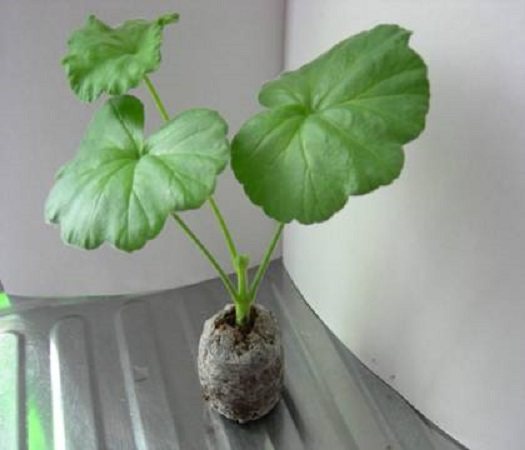

There are several useful recommendations on how geranium propagates by cuttings using peat tablets:
- the tablets are placed in plastic containers with the opening facing up;
- fill them with water;
- keep peat for a time until it swells and increases in size;
- the central hole is expanded with a pencil and cuttings are placed in them.
New roots begin to form after about 2-4 weeks, after which they are transplanted into small seedling pots. There should be no water in the containers, as peat accumulates enough moisture. Otherwise, the cuttings may rot. The transplant is carried out together with peat tablets.


